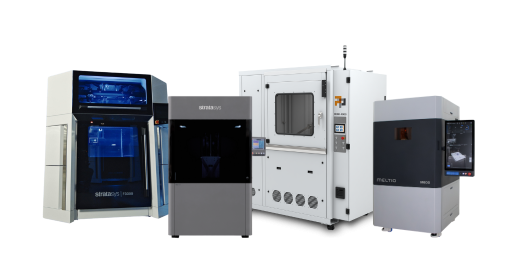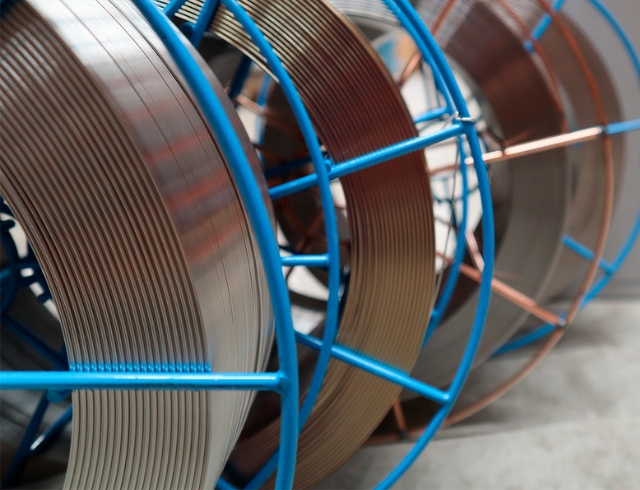3D printers
High quality 3D printers


The Meltio Robot Cell uses an innovative wire-laser metal deposition technology that combines numerous high-powered lasers with a wire-feed system. The robotic arm, driven by powerful software, carefully places the melt pool to deposit material layer by layer, allowing for the creation of intricate, large-scale 3D printed metal components.

The Meltio Robot Cell is a complete metal 3D printing solution that combines Meltio's cutting-edge wire-laser deposition technology with an industrial robotic arm. This plug-and-play technology is intended to provide large-scale metal additive manufacturing capabilities in a safe and efficient manner. It has a large build volume, allowing it to produce larger components. The cell is compatible with a wide range of metals, including stainless steel, titanium, and Inconel, making it suitable for a variety of industrial applications. The integration of Meltio Space software simplifies toolpath generation and process control, optimising the manufacturing processes.
The Meltio Robot Cell's design prioritises both safety and efficiency. It has a laser-safe enclosure that fulfils Class 1 laser product standards and is CE certified to ensure operator safety. The actively cooled build platform ensures accurate temperature control during printing, improving part quality and uniformity. Beyond typical 3D printing, the system is adaptable to applications such as part repair, cladding, and feature addition. The Meltio Robot Cell intends to make metal additive manufacturing more accessible in industrial settings by providing a standardised, ready-to-use solution that reduces integration complexity and lead times. It is a cost-effective option for making huge, complicated metal parts with great precision in industries such as aerospace, automotive, and energy.
Technical Specifications:
Print Envelope: Up to 2000 x 1000 x 1000 mm (without positioner interpolation)
Load: 500 kg max load
Laser System: 9 diode lasers with a total of 1000 watts
Laser Wavelength: 450 nm (blue)

The Meltio Robot Cell is a turnkey solution that is pre-integrated and ready for use. This dramatically decreases setup time and complexity, allowing clients to begin metal 3D printing rapidly without requiring extensive integration processes or assembly lead times. To begin manufacturing, the system merely needs to be connected to inert gas and an electric source, making advanced metal additive manufacturing technology more accessible.
By utilizing the M600 print head, the Blue Laser technology is also utilized in the Meltio Robot Cell. These 450nm wavelength blue lasers significantly increase speed – an amazing 60% when comparing the M450 to the M600 print head – when compared to traditional near infrared and green lasers. In addition, these blue lasers reduce energy consumption because light with a shorter wavelength has higher absorption rates. This also increases the range of materials, making the Meltio Robot Cell highly effective with reflective materials such as copper and aluminum.
Without positioner interpolation, the system can support a large construction volume of up to 2000 x 1000 x 1000 mm and with it, it uses an actively cooled build platform and build plate with a choice of 3 dimensions (300 x 400 mm, 150 x200 mm and 120 x 100 mm). This capability enables the manufacturing of both large and small components, making it appropriate for a variety of applications in industries such as aerospace, automotive, and energy. The Meltio Robot Cell is multifunctional, capable of standard 3D printing, component repair, cladding, and feature addition, providing a complete solution for metal manufacturing requirements.
The Meltio Robot Cell puts safety first. It comes with a laser-safe enclosure (IEC 60825-1 and IEC 60825-4) that complies with Class 1 laser product standards, a highly fire-resistant enclosure where materials do not produce toxic particles (B-s2,d0 according to UNE EN 13501-1) and is CE certified. The robotic components are securely encased in a laser-safe environment to ensure operator safety and compliance with strict safety norms. To add, all cell controls are unified on a single control panel (open doors, arm security, motors on, mode selector and emergency). The mentioned safety features allows the device to be used in regular industrial settings without requiring special safety infrastructure.
While the system is primarily designed for additive manufacturing, it can be easily integrated into hybrid manufacturing workflows, allowing additive and subtractive processes to be combined. This capability enables the addition of new features to existing parts, as well as the repair and refurbishment of worn components. The integration of an industrial robot arm increases the versatility of the system in part production. The robot arm's 6-axis motion capability, combined with an integrated 2-axis rotary tilt table, enables the production of complex geometries, such as parts with overhangs and internal features that are difficult to manufacture using conventional methods.
The Dual Wire option further expands the Meltio Robot Cell's versatility by allowing users to combine two different metals such as stainless steel, carbon steel, titanium alloys, and Inconel in a single print job. This feature gives new opportunities for developing parts with optimised performance characteristics, as different regions of a component can be printed using materials that are best suited to their unique needs. The Meltio Robot Cell's rapid material switching boosts production by eliminating downtime while also allowing for more efficient use of expensive materials. Furthermore, it increases design flexibility, allowing engineers to develop complicated parts with varied material properties throughout their structure.
The Meltio Robot Cell’s control system has a closed-loop design that allows it to automatically compensate for any deviations from the planned parameters, lowering the likelihood of faults and improving overall part quality. Its laser modulation provides fine control over the energy input, adjusting to changes in material properties or geometry to maintain ideal melting conditions. Lastly, its wire modulation system adjusts the feed rate and location of the metal wire, enabling precise material deposition. This synergistic management of laser and wire allows the system to respond dynamically to variables in the printing process, such as changes in heat accumulation or component geometry.
The Meltio Robot Cell's Hot Wire function is essentially a configurable power supply intended to preheat metal wire feedstock before it enters the melt pool formed by the lasers. Preheating the wire allows the system to reach higher deposition rates since the lasers use less energy to thoroughly melt the material which then leads to higher printing speeds, particularly for large components, and increased energy efficiency. The Hot Wire system's programmability enables customers to fine-tune the preheating parameters based on specific materials and part needs, giving them more flexibility and control over the printing process. Furthermore, preheating the wire can improve material flow and possibly improve the mechanical qualities of printed components by lowering thermal stress.
The Meltio Robot Cell is designed to accept standard BS300 wire spools, which generally store 15 kg of wire. In addition, the system may be modified to work with bigger wire drums weighing more than 100 kg, considerably extending continuous printing time for large-scale applications. Furthermore, this technique supports the use of a diverse range of metal materials, including stainless steel, tool steel, titanium, Inconel, and other specialty alloys. The open nature of the material system allows customers to get wire from a variety of providers, potentially lowering material prices and extending application options.


The Meltio Robot Cell’s ability to work with high-performance materials such as titanium and Inconel makes it perfect for manufacturing complex aircraft components. The technology, for example, can be utilised to produce lightweight structural parts, engine components, and turbine blade repairs. The vast build volume enables the manufacture of big aerospace parts, while the precision of the robotic arm assures the high accuracy necessary in this industry.

The Meltio Robot Cell is used for rapid prototyping of new automobile parts, specialised component manufacturing, and tool repair and refurbishing. It is used to design intricate exhaust manifolds, chassis components, and features for existing parts like engine blocks. Its ability to operate with a wide range of metals, including steel alloys widely used in automotive manufacture, makes it an invaluable tool for both OEMs and suppliers in the industry.

The Meltio Robot Cell's ability to generate large, complicated metal parts makes it ideal for producing components such as turbine blades, pump housings, and specialised fittings for oil and gas equipment. It can be utilised to make specific components for wind turbines and solar energy systems. The system's capacity to fix and add features to existing parts is especially useful in this industry, where equipment is frequently maintained or upgraded on-site.

The system's capacity to work with biocompatible materials such as titanium makes it ideal for creating personalised medical implants, surgical equipment, and dental prosthesis. The robotic arm's precision enables the production of complicated geometries, which are commonly required in medical devices. Furthermore, the capacity to swiftly prototype and iterate designs is very useful in this market, where personalization and rapid innovation are essential.


